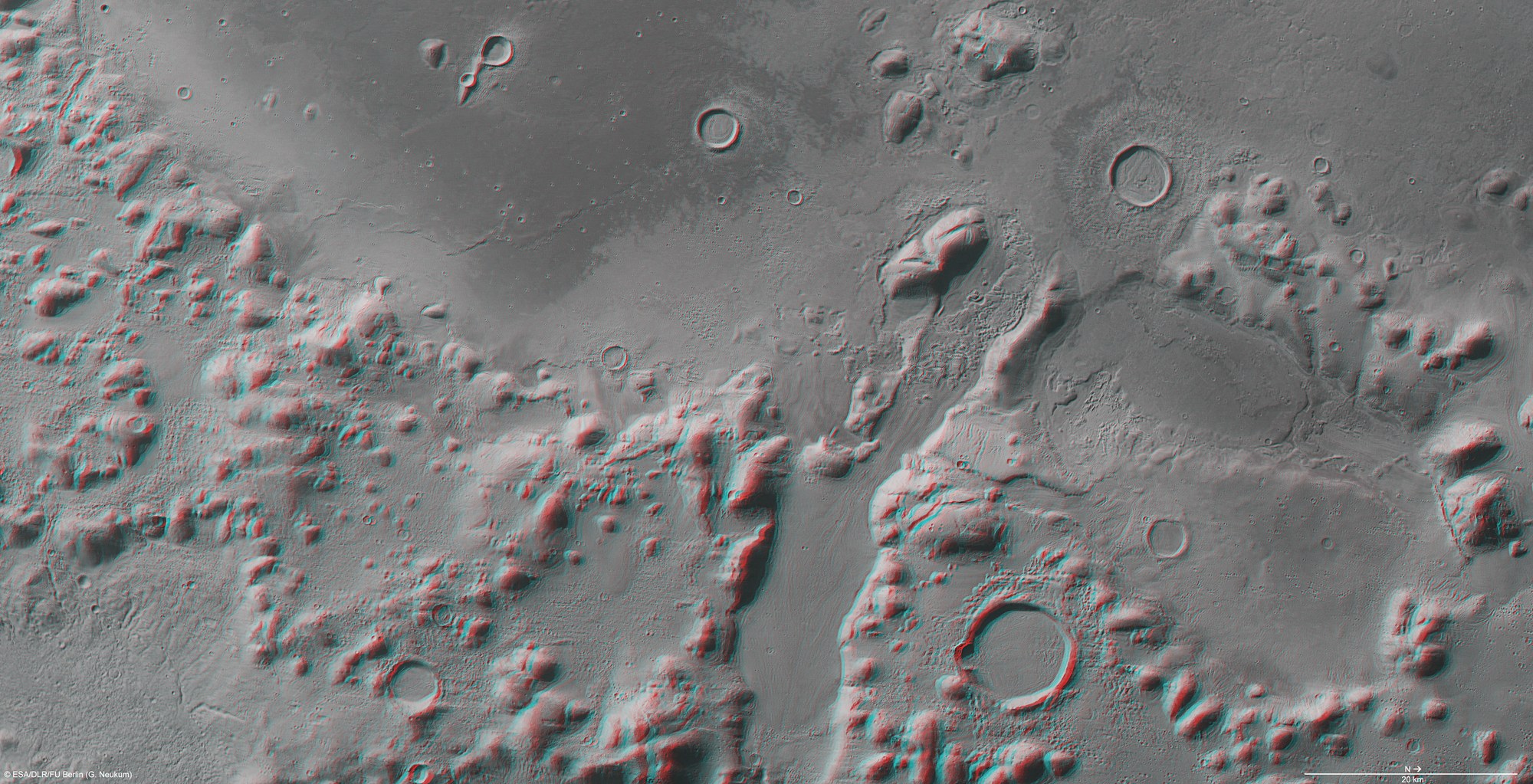Anaglyph image of the southern part of the Phlegra Montes region
Anaglyph image of the southern part of the Phlegra Montes region
Anaglyph images can be created using data from the nadir channel of the High Resolution Stereo Camera (HRSC) camera system, the field of view of which is which is directed vertically down onto the Martian surface, and one of the four stereo channels, which are directed obliquely towards the surface. By using red/blue (cyan) or red/green glasses, a three-dimensional impression of the landscape is obtained; north is to the right in the image.
The numerous rounded, one- to two-thousand-metre high hills and the ridges of Phlegra Montes are striking. Similarly the rims of a number of fresh – and therefore younger – impact craters are clearly elevated above their environs. More subtle, but still easy to recognise, are small differences in altitude that have been caused by the flow of material. Flow patterns with thin, mostly parallel-running rilles can be seen, as can numerous 10-metre-high flow fronts, the lobate tongues of which hint at large-scale material transportation. Several impact craters have been partially filled by this process as well. The flow patterns bear a strong similarity to the surfaces of 'rock glaciers' on Earth.
Copyright note:
As a joint undertaking by DLR, ESA and FU Berlin, the Mars Express HRSC images are published under a Creative Commons licence since December 2014: ESA/DLR/FU Berlin, CC BY-SA 3.0 IGO. This licence will also apply to all HRSC images released to date.

